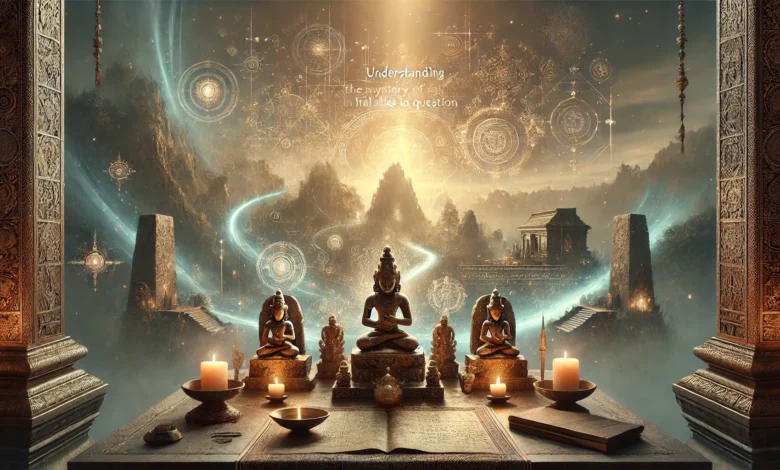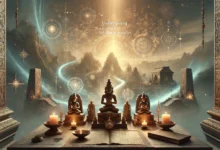Understanding the Mystery and Significance of Halau In Statuettes In Question

“Halau in statuettes in question” has been a topic of fascination for many, with people wondering about the meaning and historical importance of these intriguing representations. These statuettes have become important in both Hawaiian culture and art, raising questions about their true purpose and how they connect with the tradition of hula. From their use in rituals to their presence in modern times, understanding the deeper meaning behind these statuettes is important.
What is “Halau in Statuettes in Question” Exploring the Cultural Meaning
“Halau in statuettes in question” are small statues or figures that are often seen as representations of hula schools in Hawaiian culture. These statuettes are more than just art—they hold cultural and spiritual meaning. Many of these figures are carefully carved or molded to show the importance of hula in Hawaiian traditions. They remind people of the sacred space of the hālau, where hula is taught.
The History Behind “Halau in Statuettes in Question” and Its Influence on Hula
To understand the role of “halau in statuettes in question,” it’s essential to look back at the history of hula. Hula, the traditional Hawaiian dance, has been practiced for hundreds of years, passed down from teacher to student in hālau. The statues that represent these hālau are part of a long-standing tradition. In ancient times, these figurines were created to honor the gods and the teachers of hula.
Today, “halau in statuettes in question” still serve as an important symbol in hula schools. The figures are often displayed in hālau to remind students of the traditions they are learning. They keep the connection to the past alive, showing that hula is not just a dance but a way of life. The influence of these statuettes continues to be seen in performances, ceremonies, and even in modern art that draws inspiration from Hawaiian traditions.
How “Halau in Statuettes in Question” Connects to Hawaiian Spirituality
“Halau in statuettes in question” are not just representations of hula dancers. They are deeply connected to Hawaiian spirituality. In Hawaiian culture, everything has a spirit, and hula is no exception. The statuettes symbolize the spiritual energy that flows through the dance and the importance of respect for the gods. They remind us that hula is a sacred practice, one that is meant to honor the divine.
When a hālau is established, it is often dedicated to Laka, the goddess of hula. The statuettes serve as a physical representation of her presence. They are not just decorative pieces; they act as guardians of the space, ensuring that the hula practice remains pure and respectful. The figures also remind students that hula is more than just movement; it is a way to connect with the spiritual world.
The Role of “Halau in Statuettes in Question” in Modern Hula and Hawaiian Art
In modern times, the “halau in statuettes in question” are still a valuable part of the hula tradition. They are frequently found in hālau (hula schools) and are often used to teach students about the roots of the dance. These statuettes help to connect the modern practice of hula with its ancient origins. In this way, they are more than just decorative; they are educational tools.
- Preserving Tradition: The statuettes serve as visual aids that help students understand the cultural history of hula.
- Inspiring Creativity: Artists and dancers use the figures as inspiration for new pieces of art and performances, ensuring the tradition of hula continues to evolve.
Why Are “Halau in Statuettes in Question” So Important to Hawaiian Traditions
“Halau in statuettes in question” play a significant role in keeping Hawaiian traditions alive. They provide a visual connection to the past, helping modern generations understand the importance of hula. These figures remind us that hula is not just a dance but a spiritual and cultural practice that connects people to their ancestors.
In addition to their educational role, these statuettes also act as symbols of continuity. By preserving the knowledge and traditions of hula through these figures, the Hawaiian people ensure that future generations can continue to honor their culture. Whether in a museum or a hālau, “halau in statuettes in question” are constant reminders of the strength and beauty of Hawaiian traditions.
- Preserving Heritage: The figures help to maintain the cultural practices passed down through generations.
- Honoring the Gods: They also remind practitioners to honor the spiritual aspects of hula.
Conclusion
“Halau in statuettes in question” are more than just art pieces—they hold deep cultural and spiritual meanings for the Hawaiian people. These statues represent the sacred space of hālau, where hula is taught, and they remind us of the rich history and traditions that have been passed down through generations. Whether displayed in a hālau or used in ceremonies, they continue to honor the gods, the dance, and the people who practice it.
These statuettes help preserve the Hawaiian culture and its spiritual roots. As we learn more about their significance, we can better understand the connection between art, dance, and spirituality. The “halau in statuettes in question” are a living reminder of how tradition can still influence modern-day practices, keeping the spirit of hula alive and thriving for future generations.
FAQs
Q: What is “halau in statuettes in question”?
A: “Halau in statuettes in question” are small statues representing hula schools, or hālau, and they hold cultural and spiritual meaning in Hawaiian tradition.
Q: How are “halau in statuettes in question” used in Hawaiian culture?
A: These statuettes are used to honor the gods and represent the sacred space of a hālau where hula is taught.
Q: Why are “halau in statuettes in question” important?
A: They preserve the history and spirituality of hula, reminding people of the ancient traditions and cultural practices of Hawaiians.





